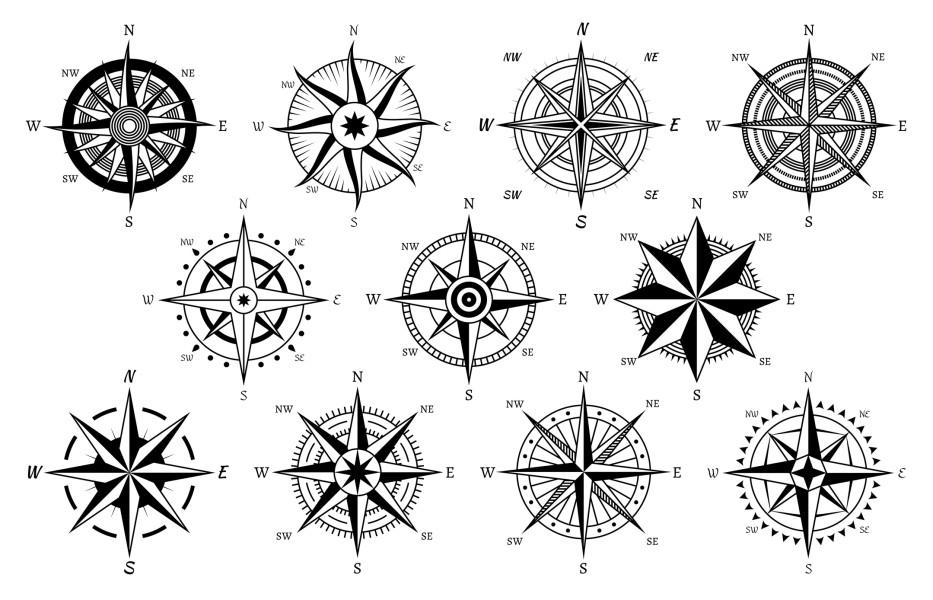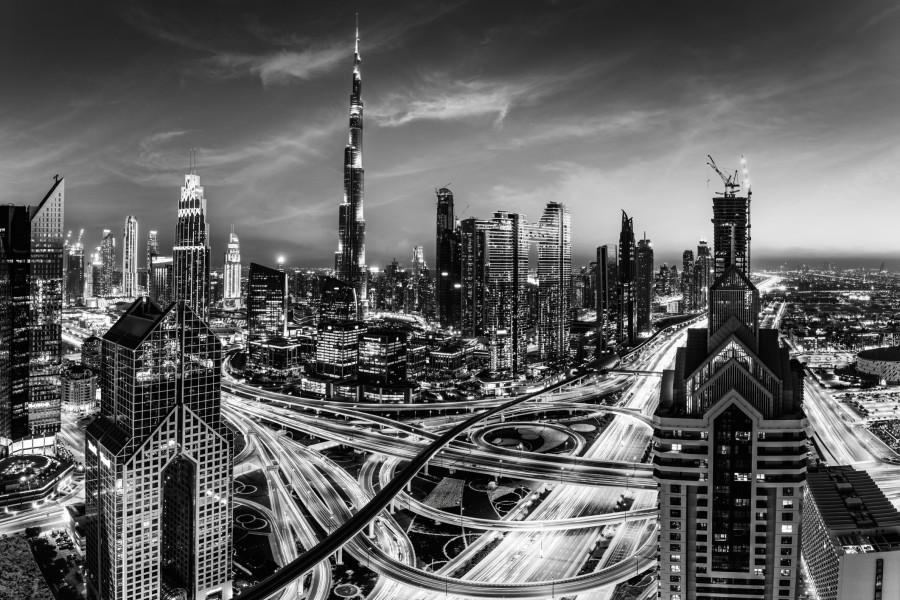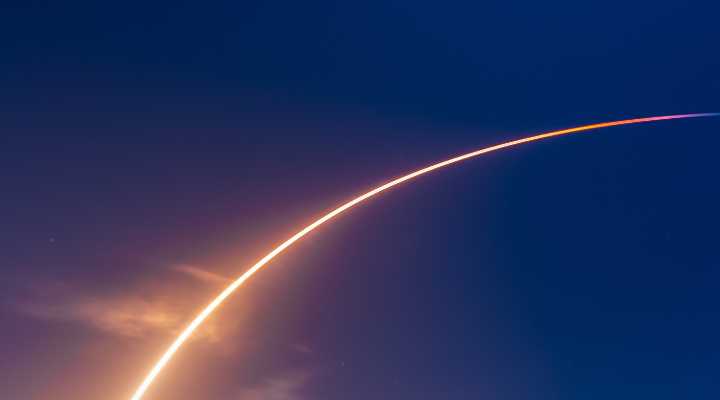“Hong Kong is filled with frustrated bulls,” barked Biggie Too, chief global strategist for one of Wall Street’s Too-Big-To-Fail affairs. “And New York is full of frustrated bears,” said Biggie, finishing up another world tour. “People don’t understand why the S&P is here. Look beneath the surface and there’s horrible damage. But you have these 10 tech stocks in a different universe,” bellowed Biggie. “We used to mock Beijing and their two economic policy gears; 4th and reverse, boom and bust,” he said. “We’d laugh at China for their state-owned enterprises, but it kind of feels like we’re moving to that here,” said Too. “Google can do as they want, just so long as they make sure we beat China.”
Overall: “We’d be in unchartered territory and the consequences on the US economy could be highly uncertain and adverse,” said Jerome Powell, warning of the risks from a looming government debt default. “No one should assume that the Fed can protect the economy from the potential short and long-term effects of a failure to pay our bills on time,” continued the Chairman. And that’s really saying something. You see, when the person running a $7.8trln central bank balance sheet, acquired through successive rounds of protecting the economy from any and every risk imaginable, says not even he can help, you probably ought to listen. “Our economy is in free fall due to unsustainable fiscal policies,” wrote a group of 43 GOP senators, including Minority Leader McConnell. So severe is Mitch’s purported economic freefall that the unemployment rate declined to 3.5%, nearly a 54-year low. “This trajectory must be addressed with fiscal reforms,” added the senators. But as pretty much everyone knows, both parties run colossal deficits when in power, and seek reforms when out. This is why our national debt rises inexorably in good times and then explodes higher in bad times. No one in Washington seriously opposes this construction because there have been few negative consequences. With deficit spending comes higher economic growth, lower unemployment, and pork. Naturally, the notion of paying our bills is a fallacy in a system of perpetual deficits. Rather, we roll our old debts as we incur new ones. We pay interest with more debt still. And the only way to restore relative balance between the size of this debt and our economic output, is to grow the latter faster than the former. But as the debt becomes larger, and the interest the government pays on it rises, the process becomes vastly more difficult. As this happens, governments find new ways to manipulate markets, investors, and the economy to achieve this objective. And that is what we will have to navigate in the decade ahead, as we hunt for opportunities.
Marcel Kasumovich, Shaun Martinak, and Hans Bhatia published a terrific note that contrasts recent TradFi bank-runs with the superior performance of decentralized finance in 2022. And they discuss how our Coinbase Asset Management team is bridging these new and superior technologies to TradFi [read here].
Week-in-Review: Mon: JPM purchases FRC with federal govt support, Yellen says Debt Ceiling X-Date could be as early as June 1st due to weak tax receipts, Biden/McCarthy agree to meet 5/9 to discuss debt ceiling, BOJ indicated it has more confidence in wage increases this year, Philippine president meets with Biden, France’s credit rating cut by Fitch, Hollywood writers go on strike, China mfg PMI 49.2 (51.4e) / serv PMI 56.4 (57e) / comp 54.4 (57p), US final mfg PMI 50.2 (50.4e), ISM mfg 47.1 (46.8e) / prices paid 53.2 (49e), S&P -0.1%; Tue: RBA hiked 25bp after recent rate hiking pause (no hike was exp) / RBA Gov Lowe cites sticky serv infl and high asset prices, EU CPI 7% (6.9%e) / Core CPI 5.6% as exp, ECB’s bank lending survey shows tight credit conditions continue, US regional banks under pressure - again, JOLTS data disappoints 9.59m (9.736m exp), Germany ret sales -6.5% as exp, EU final mfg PMI 45.8 (45.5e), Italy CPI 8.8% (8%e), US factory orders 0.9% MoM (1.2%e), S&P -1.2%; Wed: Fed hikes 25bps as exp / Powell keeps door open to either a pause or hike at next meeting – ‘data dependent’, Russia says Ukrainian drone sent to kill Putin shot down / Zelensky denies, PacWest bank weighing strategic options, Malaysia CB hikes 25bp after 2 consecutive pauses (unch exp), Iran seized another oil tanker in Strait of Hormuz – 2nd time in a week, Hungary approves judicial changes aimed at unlocking EU Funds, Biden picks Fed’s Jefferson for Vice Chair / Kugler for Fed Gov, US ADP emp chg 296k (150k exp), US final serv PMI 53.6 (53.7e) / comp 53.4 (53.5e), US ISM serv 51.9 (51.8e), S&P -0.7%; Thu: ECB hikes 25bp / accelerates QT by fully exiting APP / Lagarde highlights they are not pausing, Norges bank hiked 25bps as exp / committed to future hikes, Brazil CB unch as exp, US regional bank pressure continues / PacWest reportedly approached by suitors / multiple banks state deposits are stable, HKMA hiked rates as exp, crude recovers losses after volatile session in Asia, borrowings from Fed’s BTFP remain relatively high, AAPL reports strong earnings, China Caixin mfg PMI 49.5 (50e), EU final serv PMI 56.2 (56.6e) / comp 54.1 (54.4e), EU PPI 5.9% (5.8%e), Mexico unemp 2.39% (2.68%e), Mexico cons conf 44.1 (45e), US 1Q productivity -2.7% (-2.6%e) / Unit Labor Costs 6.3% (5.6%e), US init claims 242k (240k exp), S&P -0.7%; Fri: US NFP 253k (185k exp) – 13th consecutive beat vs estimate / unemp 3.4% (3.6%e) / AHE 4.4% (4.2%e), WHO says global covid pandemic is over, ECB’s Simkus says yesterday’s hike will not be the last / ECB’s Villeroy says supports the shift to 25bp increments (from 50bp), regional bank stress dissipate (PacWest +82%), China Caixin serv pmi 56.4 (57e) / comp 53.6 (54.5e), Germany factory orders -11% (-3.1%e), EU ret sales -3.8% (-3.3%e), Canada emp chg 41.4k (20k exp) / unemp 5% (5.1%e) / hourly wage chg 5.2% (4.8%e), US consumer credit $26.514b ($17b exp), S&P +1.9%.
Manufacturing PMI (high-to-low): Hungary 61.9 (previous month 56), India 57.2 (previous 56.4), Indonesia 52.7 (previous 51.9), Russia 52.6/53.2, Greece 52.4/52.8, Hong Kong 52.4/53.5, Turkey 51.5/50.9, Norway 51.22/48.57, Mexico 51.1/51, Canada 50.2/48.6, Singapore 49.7/49.9, South Africa 49.6/49.7, China 49.5/50, Japan 49.5/49.2, Spain 49/51.3, South Korea 48.1/47.6, UK 47.8/47.9, US 47.1/46.3, Taiwan 47.1/48.6, Italy 46.8/51.1, Vietnam 46.7/47.7, Poland 46.6/48.3, France 45.6/47.3, Sweden 45.5/45.5, Switzerland 45.3/47, Netherlands 44.9/46.4, Germany 44.5/44.7, Brazil 44.3/47, Czech Republic 42.8/44.3, Austria 42/44.7. Services PMI: India 62/57.8, Ireland 58.4/55.7, Spain 57.9/59.4, Italy 57.6/55.7, China 56.4/57.8, Germany 56/53.7, UK 55.9/52.9, Russia 55.9/58.1, Japan 54.9/55, France 54.6/53.9, Brazil 54.5/51.8, US 53.6/52.6, Sweden 50.5/49.9.
Weekly Close: S&P 500 -0.8% and VIX +1.41 at +17.19. Nikkei +1.0%, Shanghai +0.3%, Euro Stoxx -0.3%, Bovespa +0.7%, MSCI World -0.5%, and MSCI Emerging +0.5%. USD rose +0.6% vs South Africa, +0.3% vs Turkey, flat vs Indonesia, and flat vs Euro. USD fell -5.4% vs Russia, -2.6% vs Ethereum, -2.0% vs Australia, -1.6% vs Chile, -1.3% vs Mexico, -1.3% vs Canada, -1.1% vs Yen, -0.9% vs Sweden, -0.7% vs Brazil, -0.5% vs Sterling, -0.3% vs Bitcoin, flat vs China, and flat vs India. Gold +1.3%, Silver +2.8%, Oil -7.1%, Copper -0.2%, Iron Ore -3.8%, Corn +2.0%. 10yr Inflation Breakevens (EU -8bps at 2.27%, US +1bps at 2.22%, JP +7bps at 0.82%, and UK -3bps at 3.57%). 2yr Notes -9bps at 3.92% and 10yr Notes +2bps at 3.44%.
Year-to-Date Equities (high to low): Mexico +24.3% priced in US dollars (+13.4% priced in pesos), Greece +23.1% priced in US dollars (+19.5% in euros), Czech Republic +22.9% in dollars (+15.7% in koruna), Ireland +21.7% (+18.1%), Italy +18.8% (+15.4%), France +18.3% (+14.8%), Germany +18.1% (+14.6%), Euro Stoxx 50 +17.8% (+14.4%), NASDAQ +16.9% (+16.9%), Hungary +16.8% (+5.8%), Argentina +15.1% (+47%), Poland +15% (+9.1%), Spain +14.5% (+11.2%), Denmark +13.7% (+10.7%), Sweden +12.5% (+9.6%), Russia +12.2% (+17.8%), Netherlands +12.2% (+8.9%), Switzerland +11.5% (+7.7%), Chile +11.3% (+4.2%), Taiwan +10.8% (+10.5%), UK +9.1% (+4.4%), MSCI World +8.4% (+8.4%), China +7.8% (+7.9%), S&P 500 +7.7% (+7.7%), Portugal +7.6% (+4.5%), Japan +7.3% (+11.7%), Canada +7% (+6%), Korea +6.7% (+11.8%), Saudi Arabia +6.4% (+6.1%), Austria +6% (+2.9%), Belgium +5.7% (+2.7%), Venezuela +5% (+55.2%), Indonesia +4.7% (-0.9%), New Zealand +2.8% (+3.6%), Brazil +2.5% (-4.2%), Philippines +2.5% (+1.8%), Finland +1.6% (-1.3%), Singapore +1.6% (+0.5%), Australia +1.6% (+2.6%), India +1% (-0.2%), HK +0.8% (+1.4%), South Africa +0.3% (+8.3%), Russell -0.1% (-0.1%), Colombia -3.1% (-9.5%), UAE -4.9% (-4.9%), Israel -5% (-1.5%), Malaysia -5% (-4.3%), Thailand -6.2% (-8.1%), Norway -7% (+0.1%), Turkey -23.4% (-20.1%).
Hunters: “Hard to imagine a repeat of the past 35yrs,” said the investor at one of the great Sovereign Wealth Funds. “The macro thematics have played out and are slowing or reversing,” he said. “The world’s most populous nation industrialized. Friction eased in the movements of goods, capital, people, everything. Now all evidence indicates this is changing,” he said. “The core insight is that such things have ceased to be a tailwind. But this change can happen in different ways, at different rates, in different places. And this variability represents opportunity.”
Hunters II: “Over these decades, macro volatility, interest rates and inflation all declined,” continued SWF. “Liquidity expanded and this accommodated large fiscal expansions at minimal cost,” he said. “This reached its mathematical zenith unless you believe that such trends can persist forever,” he said. “But inflation was the constraint and now fiscal expansion carries real costs. And different countries are dealing with this in their own ways, which leads to less correlation across the world. This then results in increased volatility - also an opportunity.”
Hunters III: “For decades, Chimerica reinforced global balance,” said SWF. “When China pressed the accelerator, the US hit the brakes.” And vice versa. “And the system was built on cheap energy. But we didn’t appreciate the climate externalities, so now we will spend the coming decades replacing efficient energy infrastructure with new sources of energy that are less efficient, less reliable, and more expensive.” It is the first time in history that such an investment has been made at this scale. “This makes everything more expensive, harder, less efficient.”
Hunters IV: “The rules of the global game were written and policed by an unrivaled global power,” he said. “Now the US and China are engaged in a power struggle. At first the dream was they could engage in everything but a narrow set of areas defined as national security,” he said. “But security issues have a way of metastasizing across everything: institutions, data, commerce, finance, you name it. And I read reports saying deglobalization is a myth. But that is ludicrous. Look at the forward intentions of expanding western business into China, they’re all negative.”
Hunters V: “The west is reintroducing industrial policy,” said SWF. “In the name of national security and securing independence or at least redundancy, we are seeing political and regulatory pressures to achieve specific goals,” he said. “In Canada you see pensions pressured to invest heavily to achieve Net Zero. It will be uneconomical for sure, and prone to huge disruption risk; technological, regulatory. A lot of this capital will be quickly devalued or made useless, because much of the spending will be in R&D that will make older technology obsolete.”
Hunters VI: “The Americans are making vast investments in chip fabs,” SWF added. “There are $260bln in plants planned in the US. And the same is happening in Spain, Australia,” he said. “We don’t need all these plants. And these countries don’t have the skilled labor to build and man the factories. But they will still get built, wrapped in national flags, in the name of security. Fiscal support, politics, regulation, and national pension systems will be brought to bear to make these projects a reality. Eventually it will be deflationary, but for now it is the opposite.”
Hunters VII: “The sum of all these forces will manifest as Reverse QE,” explained SWF. “We will see this huge soak for capital, skilled labor. It will invisibly push up risk premiums in the same way QE invisibly pushed them down,” he said. “Not that on any given day you could point to a QE operation and draw a direct line to the decline in risk premiums. It was over time, you would just step back and say, what in the world has happened here? Look at how low risk premiums have fallen. That’s now reversing. It’ll be this constant pressure, for decades.”
Anecdote: “Since 2008, all investors have been punished together and then rescued together,” said the investor at one of the great Sovereign Wealth Funds. “Policy makers panic, the liquidity hose comes out, and there’s no real cost, because there has been no inflation,” he continued. “We’ve operated this way for so many years, and it has created such distinct market behaviors that our governments have legislated to force investors to build portfolios accordingly,” he said. “This is institutional entropy at play, and you see it in Australia where their superannuation funds can no longer take meaningful active bets at exactly the time when such bets will be vital to navigating the change that is hitting the global economy and markets.” The Australian superannuation industry is ~$3.4trln AUD of pension money, roughly double the nation’s GDP. “Investment managers who have taken active bets and lost, underperformed their peers. So, Australia’s politicians and regulators determined that looking the same is a super investment strategy.” The industry is legislated in a way that forces it to have portfolios optimized so perfectly for the past that they will struggle if tomorrow looks even moderately different from yesterday. “I know managers who tell me they absolutely agree that the investment paradigm has changed substantially, but that there’s nothing they can do about it in their portfolios,” he said. “None of this will change the structure of the industry for many years. Superannuations will exist, as will pensions in Canada, the US, the UK.” Each will be pressured in a variety of ways to support well-meaning national policy. “When they underperform and cannot deliver the needed returns, they’ll be blamed. But system reform will be hampered by the difficult fiscal situation that the developed world economies face. You can’t look at these nations and think the math will work without large tax increases, meaningful inflation, and/or a reliance on the national pension/saving system.” Probably all three. “And here’s the irony. The investors who are best positioned to hunt for the opportunities that will arise are the lightly regulated, frictionless, flexible, thoughtful managers who can be super opportunistic.”
Good luck out there,
Eric Peters
Chief Investment Officer
One River Asset Management
Disclaimer: All characters and events contained herein are entirely fictional. Even those things that appear based on real people and actual events are products of the author’s imagination. Any similarity is merely coincidental. The numbers are unreliable. The statistics too. Consequently, this message does not contain any investment recommendation, advice, or solicitation of any sort for any product, fund or service. The views expressed are strictly those of the author, even if often times they are not actually views held by the author, or directly contradict those views genuinely held by the author. And the views may certainly differ from those of any firm or person that the author may advise, converse with, or otherwise be associated with. Lastly, any inappropriate language, innuendo or dark humor contained herein is not specifically intended to offend the reader. And besides, nothing could possibly be more offensive than the real-life actions of the inept policy makers, corrupt elected leaders and short, paranoid dictators who infest our little planet. Yet we suffer their indignities every day. Oh yeah, past performance is not indicative of future returns.





